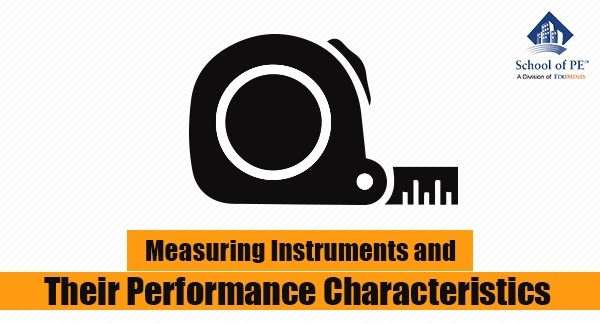Measuring Instruments and Their Performance Characteristics
Apr 10, 2017Table of Contents
1. Introduction
Measuring instruments are used to measure a quantity. When choosing an instrument, the static calibration and static performance of an instrument must be considered. Our PE Electrical exam review course thoroughly covers what to consider when selecting instruments for a given job.
The characteristics of measuring instruments can be classified into the following categories:
1)Static performance characteristics
2)Dynamic performance characteristics

2. Static Calibration
Static calibration refers to the procedure where an input is constant or a variable is applied to an instrument. Instruments are manufactured based on the property of irreversibility or directionality. This implies that change in an input quantity will cause a corresponding change in the output. A calibration standard must be at least ten times more accurate than the instrument to be calibrated.
Static performance characteristics include the linearity performance of the instrument, static sensitivity of the instrument, repeatability of the same results, hysteresis resolution, and the readability of the results.
Static performance characteristics influence data acquisition if the instruments are not properly calibrated prior to the measurement. Understanding quality control and quality assurance procedures for handling equipment is essential for the PE exam.
3. Linearity
If the relationship between the output and input can be expressed by the equation Q0= P + RQ1, where P and R are constants, then the instrument is considered linear. Linearity is never fully achieved in real-world situations, and the deviations from the ideal are referred to as linearity tolerances. For example, 3% independent linearity means that the output will remain within the values set by two parallel lines spaced ± 3% of the full-scale output from the idealized line. If the input-output relationship is not linear for an instrument, it may still be approximated to a linear form when it is used over a very restrictive range.
4. Static Sensitivity
Static sensitivity can be defined as the slope of a calibration curve.
Sensitivity = Q0/Q1
Sensitivity influences the input parameters of an instrument. The sensitivity factor can also be referred to as sensitivity drift or scale factor drift.
5. Repeatability Error
When an instrument is used to measure the same or an identical input many times and at different time intervals, the output is never the same; it deviates from the recorded values. This deviation from the ideal value is referred to as repeatability error.
6. Hysteresis-Threshold Resolution
When testing an instrument for repeatability, it is often noted that the input-out value does not coincide with the inputs, which are continuously ascending and descending values. This occurs because of hysteresis, which is caused by internal friction, sliding, external friction, and free play mechanisms. Hysteresis can be eliminated by taking readings corresponding to the ascending and descending values of the input and calculating their arithmetic mean.
Professional engineers who work with measurements and instrumentation should understand calibration procedures of various instruments for proper data acquisition.
Latest Blogs
Blogs by Year/ Month
Copied to clipboard



